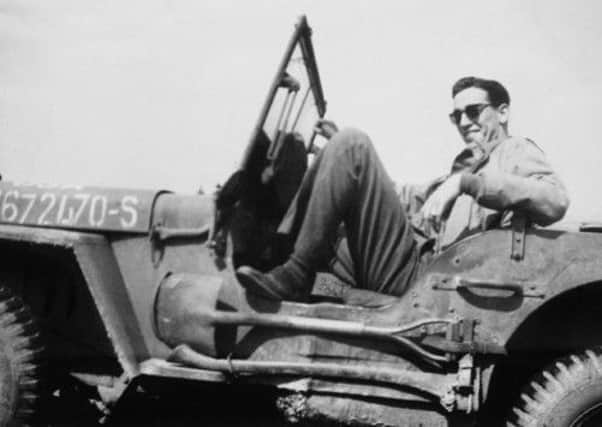Book review: Salinger


SALINGER
by David Shields and Shane Salerno
Simon & Schuster, 704pp, £25
This was true, too, of the famously reclusive Salinger, who retreated to the small town of Cornish, New Hampshire, where he lived in seclusion for more than a half-century. His alienation from the world and his mania for privacy became part of the Salinger myth – a myth that David Shields and Shane Salerno attempt to pierce in their revealing but often slapdash new book.
Salinger stopped publishing decades ago (his last story to
appear in print appeared in the New Yorker in 1965) but, by some reports, he continued to write nearly every day. Salerno and Shields assert that Salinger left instructions “authorising a specific timetable” (starting between 2015 and 2020) for the release of a vast amount of unpublished work.
Advertisement
Hide AdThis would include five new Glass family stories; a novel based on his relationship with his first wife, Sylvia Welter, a German he married shortly after the Second World War; a novella in the form of a counter intelligence officer’s diary entries during the war; a story-filled “manual” about the Vedanta religious philosophy; and new or retooled stories fleshing out the story of Holden Caulfield, known to generations of readers from The Catcher in the Rye, the novel that made him famous in 1951 as the voice of adolescent angst. The posthumous publishing plans are attributed to two anonymous sources described as “independent and separate”.
The sharp-edged portrait of Salinger that Shields and Salerno draw in this book is that of a writer whose “life was a slow-motion suicide mission” – a man who never recovered from the horrors of wartime combat and the sight of a Nazi death camp filled with burned and smouldering corpses.
Salinger, they argue, tried to grapple with his post-traumatic stress disorder first with art and later with religion: “The war broke him as a man and made him a great artist; religion offered him postwar spiritual solace and killed his art.”
This reductive diagnosis of Salinger’s “condition” is accompanied by pages and pages of testimony about how his youthful arrogance and disaffection with his parents’ bourgeois world calcified, after the war, into a deep antipathy, even repugnance for most worldly things and ideas.
Salinger’s family, the authors say, had to compete for his attention with the fictional characters he’d created. One scholar quoted here says that when Salinger went off to his writing bunker, he gave “strict orders that he was not to be disturbed for anything unless the house was burning down”.
This book isn’t a conventional biography so much as an accompaniment to Salerno’s documentary of the same name that had its first screening in the US earlier this month. Excerpts from 200 interviews, snippets from books and newspaper articles, letters and photos (some new) and photocopies of documents have all been assembled along with the authors’ own remarks into a sprawling, cut-and-paste collage that relies on previous biographies and memoirs by his daughter, Margaret, and his former lover Joyce Maynard.
Advertisement
Hide AdThis methodology gives the reader a loose, almost collective, portrait of Salinger. Instead of assiduously sifting fact from conjecture and trying to sort out discrepancies, Salerno and Shields are often content to lay back and simply let sources speak for themselves. They even suggest that Catcher in some way played a role in the killings of John Lennon and the young actress Rebecca Schaeffer, and the attempted assassination of Ronald Reagan.
Attempting to identify patterns in Salinger’s life and art, Salerno and Shields quote sources who note his compulsion to try to control the lives of those closest to him and his appreciation of fiction as a way to orchestrate his fantasies.
Advertisement
Hide AdInnocence and nostalgia, they remind us, were recurring themes in his work, and they suggest that these preoccupations – not unlike his fondness for old-fashioned television – represented a desire to turn back the clock, to retreat to the past (before the war, before his hospitalisation for “battle fatigue,” before his psyche was horribly scarred).
They also contend that this yearning for innocence – coupled with his devastation at being dumped as a young man by the teenage Oona O’Neill for Charlie Chaplin in 1943 – had something to do with his need to seek out young women: his need to idolise them, seduce them and then abandon them. With Jean Miller – a 14-year-old he met at a Florida beach resort in 1949 and who seems to have inspired the heroine of For Esmé – With Love and Squalor – he nurtured a five-year relationship, only to freeze her out the day after they had sex for the first time.
There is something creepy in Salinger’s use of his distinctive Holden-esque voice to try to charm his potential conquests – in a 1972 letter to Maynard the 53-year-old author describes himself as “perhaps the last active Mousketeer east of
the White House” – and his judgmental impulse to divide the world into us and them, inviting these worshipful young love interests to join his elite little club, only to expel them later with a curt dismissal that they’re merely ordinary or conventional, not special enough for him.
“The problem with you, Joyce,” Maynard recalls him saying, “is you love the world”.